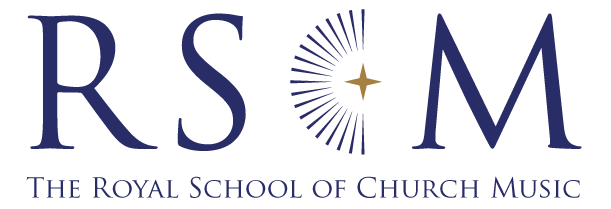Reviews of CDs
* Worth hearing
** Recommended
*** Essential listening
ADVENT AND CHRISTMAS
**
AVE REX ANGELORUM
Choir of Keble College, Oxford / Jeremy Filsell and Benjamin Mills (organ) / Matthew Martin
CRD3537
This is an attractive programme of music following the journey from Christ the King to Epiphany. Martin Baker’s punchy arrangement of Christus vincit provides an arresting opening and sets up the disc for an hour of well-chosen, well-performed music that is a joy to listen to. The choir’s diction is flawless. Most of the music is by 20th- and 21st-century composers, with some plainsong arrangements along the way. What a treat though to hear the Alleluia: Vidimus stellam in its original plainsong setting, sung by the upper voices of the choir: an ethereal performance! Equally impressive is the urgent and powerful account of Britten’s Hymn to St Columba. Matthew Martin’s O Oriens also receives a wonderful performance – the music is given space to breathe; it is an outstanding example of medieval plainsong meeting 21st-century counterpoint. Ian Munro
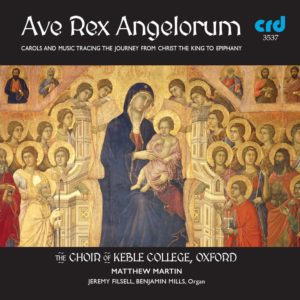
**
MAKE WE MERRY
Christmas Music for Upper Voices by David Bednall, Bob Chilcott and Sarah Quartel
Benenden Chapel Choir / London Metropolitan Brass / David Bednall (organ and piano) / Kizzy Brooks (percussion) / Rebecca McNaught (cello) / Adam Harrod (djembe) / Edward Whiting
Regent REGCD547
The title piece here is David Bednall’s Make we Merry, a half-hour sequence of eight carols for upper voices, brass, percussion and organ, commissioned for Benenden Chapel Choir in 2018. This choir is superb in pitch, ensemble and balance, and with power or charm as required. The eight movements of Bednall’s sequence of Christmas poems have a wide variety of moods and an exhilarating conclusion. Chilcott’s The Midnight of your Birth exhibits what Gordon Appleton once described in Sunday by Sunday as ‘a delightful freshness and artful simplicity’. Canadian Sarah Quartel celebrates in Snow Angel ‘the love, beauty, and the strength that a child’s voice can bring to our troubled world’. A melodic cello line is present throughout and in the fourth movement a djembe introduces an African feel. This is a particularly satisfying Christmas CD that does not follow the well-worn seasonal paths. Judith Markwith
**
BEN PARRY: MUSIC FOR CHRISTMAS
Chapel Choir of Selwyn College, Cambridge / Ely Cathedral Girls’ Choir / Sarah MacDonald
Regent REGCD542
This disc is the latest in a series of recordings, each of which features the work of one living composer, in this case compositions and arrangements of Ben Parry: conductor, composer, singer and current assistant director of music at King’s College, Cambridge. The Selwyn College singers may lack the finesse of some Cambridge choirs, but they still present a disc of spirited performances. A lively Three Angels in 5/8 metre gets the disc off to a good start. Adam lay ybounden is exquisite. Despite their clear diction, there are occasions where the choir’s intonation is in danger of dropping – especially during long notes, such as in the Aldeburgh Carol. The altos in a couple of tracks border on being over-enthusiastic! Ian Munro
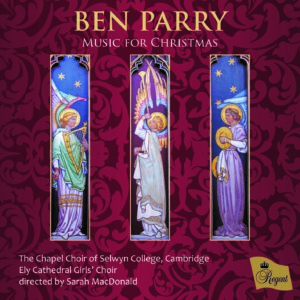
***
MARGARET RIZZA: AVE GENEROSA
A Musical Journey with the Mystics
Gaudete Ensemble /
Eamonn Dougan
Convivium
CR056
Helping the listener spiritually enter into another realm is a claim that music has made over the centuries. Margaret Rizza quotes St Paul’s ‘Let your minds be remade and your whole nature thus transformed’ in her introduction to these 13 settings of prayers, hymns and antiphons from the Bible and from mystical writers from Hildegard of Bingen through St John of the Cross to the 20th-century Thomas Merton and John Main.
Many readers of CMQ will be familiar with Margaret Rizza’s musical style including unaccompanied choral writing, vocal solos, strings and woodwind with solo lines and in ensemble, simple chant and rich harmonies – interwoven, and serving the words and what lies behind them. Several pieces relate to Advent and Christmas, with three of the
O Antiphons, and three that have the Virgin Mary and the Incarnation
as their subject. These include Hildegard’s Ave Generosa, and a remarkable setting of words taken from Thomas Merton, Mary Slept,
which opens with clusters of sound (‘cosmic silence’ is the composer’s
phrase) before upper voices describe how ‘Mary slept in the infinite
tranquillity of God; and God was a child curled up who slept in her.’ This could be an ideal disc to accompany an Advent and Christmas this year stripped of some of its outward tinsel. Julian Elloway
**
THE CENTENARY SERVICE:
A FESTIVAL OF NINE LESSONS
AND CAROLS
Choir of King’s College, Cambridge
/ Henry Websdale, Dónal McCann / Guy Johnston (cello) / Stephen Cleobury King’s College, Cambridge KGS0036
More than just a CD recording of the entire service, this is a document celebrating 100 years of the world’s most famous carol service. The CD is tucked in a back sleeve of a small book containing the text of the service, as well as memories and reflections of several people associated with it. The music is appropriately chosen, including compositions and arrangements by former directors of music at King’s alongside some of the music sung at that first service, one hundred years ago. The pressures of live performance may have affected some of the choristers: Adam lay ybounden has a shaky start, and the tempo fluctuates during Poston’s Jesus Christ the apple tree. However, the remaining carols are sung beautifully, and this is a fine, honest recording of this special service. Ian Munro
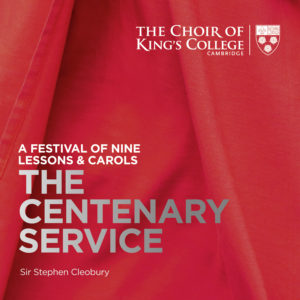
**
ADVENT LIVE VOLUME 2
Choir of St John’s College,
Cambridge / Andrew Nethsingha
Signum Classics SIGCD661
This CD is a compilation of music taken from the 2018 and 2019 Advent carol services broadcast on BBC Radio 3 by the choir of St John’s College, Cambridge. The choir’s director, Andrew Nethsingha, has
chosen a wide selection of repertoire that is sung to great effect, ranging
from the familiar Paul Manz E’en so, Lord Jesus, quickly come to the lesser-known I am the day by Jonathan Dove. Three instrumentalists (harp, soprano saxophone and archlute) add an extra dimension to the music. The soprano saxophone in Gabriel Jackson’s Vox clara ecce intonat is a surprising yet effective inclusion. My only quibbles with the performances are the swift tempi of Howells’s A Spotless Rose, and that, despite the crisp rhythms of Pärt’s Bogóroditsye Dyévo, which have a real vitality, the diction is a little lost. Ian Munro
ORGAN CD
**
ORGAN PROM
John Challenger plays the
organ of Salisbury Cathedral
www.salisburycathedral.org.uk
5029385861322
This is the first recording made on the recently restored ‘Father’ Willis
organ of Salisbury Cathedral. John Challenger goes to town, showcasing
the magnificence of this instrument and the sterling work of Harrison and Harrison organ builders. The attractive programme is full of audience favourites including J.S. Bach’s D minor Toccata and Fugue and the Toccata from Widor’s 5th Symphony. One could argue the recording is a stereotypical organ recital but that doesn’t matter when everything is so well played: Elgar’s ‘Nimrod’ comes across at what feels like the perfect tempo and the inclusion of Walter Alcock’s Marche Triomphale is particularly fitting as he was a previous organist at Salisbury. The dynamic contrasts and range of timbres achievable on this organ are astonishing, including a particularly powerful Trumpet. Challenger’s rubato in Walton’s Orb and Sceptre and Elgar’s Pomp and Circumstance March No.1 is, for me, just a bit too much.
Ian Munro
CHORAL CDs
**
SLEEPER’S PRAYER
Choral Music from North America
Choir and choristers of Merton
College, Oxford / Alex Little and
Tom Fetherstonhaugh (organ) /
Claire Wickes (flute) / Benjamin
Nicholas
Delphian DCD 34232
If this and previous CD projects are anything to go by, the music tradition at Merton College Oxford is going from strength to strength. Thanks to generous American funding, the foundation – barely 10 years old – now consists of 25 student choral scholars, and since 2016, 24 girl choristers. In 2013 a new American organ was installed in the college chapel. Reflecting their links across the Atlantic, this CD features some fine choral writing by two contemporary American composers, Nico Muhly and David Lang, who have arranged or written especially for the choir. Lang uses minimalism; his sleeper’s prayer, a setting of his own text, is a case in point. Muhly nonetheless comes up with some exciting sonorities too – the use of brass in Senex puerum portabatto underlie the choral writing, for example. With other works from other American composers including Philip Glass and an arrangement of Deep River by Gerre Hancock, exciting sonorities abound on this CD with precision singing and playing at its very best. Stuart Robinson
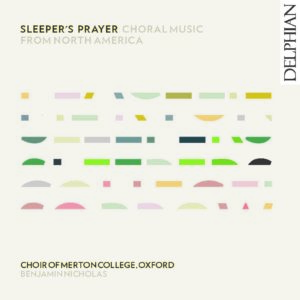
*
SINGING IN SECRET:
CLANDESTINE CATHOLIC
MUSIC BY WILLIAM BYRD
Marian Consort / Rory McCleery
Delphian DCD34230
This is an interesting CD of music composed by William Byrd for use in Catholic liturgy, observed in secret during the turbulent times of Elizabethan England. A selection of anthems and motets intersperses the movements of the Mass for Four Voices. The choice of music is not in question. This is an attractive CD and a welcome addition to the catalogue, despite ensemble issues. The Marian Consort and its director, Rory McCleery, have impressive CVs, but the voices do not quite blend and vibrato is considerable. Apart from the Mass, the pieces are sung with one voice per part – which, theoretically, allows for clearer textures and counterpoint, although the counterpoint can be obscured by a prominent countertenor and an even stronger soprano line. However, there are sublime moments, particularly in the Ave Maria, which are to be treasured. Ian Munro
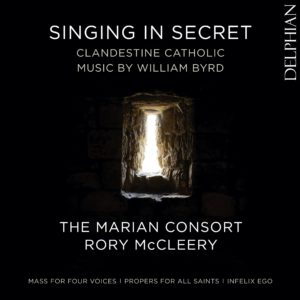
*
GRAHAM KEITCH:
GUARDIAN OF HEAVEN
Cantate / Zoltán Pad
EM Records
EMRCD061
This generous selection of pieces written since 2012 showcases the music of a composer firmly within the Anglican choral tradition sung by an excellent Hungarian choir. Of two settings of the evensong canticles, one is accompanied and with BCP English text and one unaccompanied in Latin. There is a Latin Mass setting (with a thrilling Gloria) and 12 anthem for a variety of occasions. Keitch writes technically assured, singable music for the church, attractive to choirs and congregations. If you do not know his music, and I did not until hearing these recordings, there are tasters of every track on the EM Records website. Listen and you may well find yourself ordering a copy of this CD of a composer of whom I am sure we will be hearing a lot more. Judith Markwith
***
THE ROAD HOME: CHORAL
MUSIC FROM AMERICA
Willow Consort / Danny Purtell
Convivium CR048
The first word I wrote when listening to this album of a cappella American music was ‘perfection’. Bright, clear diction, with a good vocal blend, effective dynamics and a pure sound – no vibrato! The close harmonies sound glorious and the dissonances are perfectly in tune. The top soprano notes float and soar effortlessly. This is a programme of discoveries from a range of American composers. Bern Herbolsheimer’s Seven Last Words is a beautiful yet intense setting of Jesus’ final words on the Cross. Gerre Hancock’s arrangement of Deep River is a beautiful and moving setting of this spiritual. The CD notes could be more insightful, and do not mention Stephen Paulus’s The Road Home – the work that gives the album its title. Ian Munro
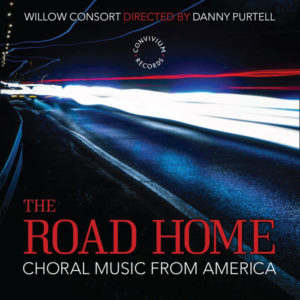
***
AVE MARIA
First Vespers of the Solemnity
of Our Lady of Buckfast
Choir of Buckfast Abbey /
David Davies and Matthew
Searles (organ)/ Philip Arkwright
Ad Fontes AF003
Judging by the accompanying lavish booklet, no expense has been spared in the production of this CD from Ad Fontes, a label founded by Buckfast Abbey, featuring the adult choir attached to this Benedictine community in South Devon. Gregorian chant provides the backbone of this service. Performed in Latin, the singing throughout is beautifully phrased and paced, with sensitive organ accompaniment by Matthew Searles. There are two fine fauxbourdon settings of the psalmody by Matthew Martin and Philip Arkwright, the latter being the Abbey’s master of the music. The CD also features works by Guerrero, Byrd and Victoria. This service is punctuated by some splendid improvisations – redolent of Duruflé – by David Davies, the Abbey’s organist, playing the new Ruffatti organ. Sadly the booklet has little mention of this fine instrument, but there is plenty of detailed background about the Abbey’s history and the music. If you’re pining for this kind of liturgy, this CD should transport you to heaven. Stuart Robinson
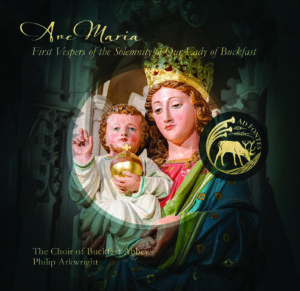
BOOKS
THE MAKING OF
HANDEL’S MESSIAH
Andrew Gant
Bodleian Library Publishing
144pp. P/B 978-1-85124-506-2
£15.00
This beautifully produced and illustrated book describes the background of Handel’s world in Germany, Italy, London and Dublin and of the sacred oratorio, before shedding light on Handel’s librettist, Charles Jennens, and their working relationship. It is illustrated with reproductions of texts and manuscripts in the Bodleian Library, Oxford (including Handel’s conducting score). Handel’s ‘borrowings’, the Dublin premiere, Handel’s performers, his variants and revisions (in a chapter headed ‘We shall be changed’) lead to a final chapter covering the subsequent reception and performance history of the piece, including Victorian massed choirs and today’s ‘Scratch Messiah’ and ‘Come and sing Messiah’ events. Andrew Gant applies with a light touch his wide reading and knowledge of the work and its background – his love for the music underpins his telling of the story. Julian Elloway
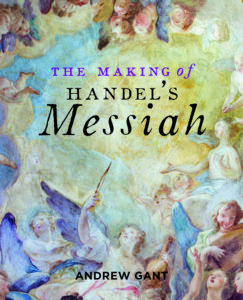
RESOUNDING BODY:
BUILDING CHRISTLIKE
CHURCH COMMUNITIES
THROUGH MUSIC
Andy Thomas
Sacristy Press: 106pp.
P/B 978-1-78959-112-5 £12.99
No one who reads this delightful and elegantly telling book will ever again doubt the core value of a choir / music group / worship band / organist / cantor and, above all, a singing congregation in building up the local church – the hope of the world. It provides a real steroid-boost to anyone leading, thinking about leading, or participating in a music ministry – especially in a church that thinks it doesn’t have many resources.
For Andy Thomas, church music ‘is one of the activities we do to transform ourselves and those around us into the body of Christ’. He points us to St Paul’s words, explaining how the Holy Spirit can do this while we are engaged in all the mundanities of sorting out rehearsals, personnel and repertoire. Each chapter begins with a short vignette based on Andy’s own experience of music ministry at a parish church where he sees so many possibilities. We can learn much from him about how to find new possibilities in our own situations. Highly recommended!
Miles Quick
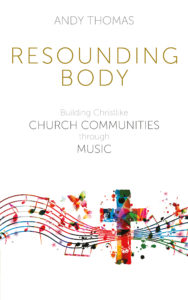
‘THEY FLY FORGOTTEN,
AS A DREAM . . .’
Some lesser-known church
musicians from the
Victorian and Edwardian eras
John Henderson and Trevor Jarvis
RSCM: 379pp. P/B book with
mixed-media
CD 978-0-85402-302-8 £28.00
(£21.00 RSCM Members)
Just as John Henderson, in his invaluable Directory of Composers for Organ, welcomes every entry without discrimination, so in his latest collaboration with Trevor Jarvis he covers a delightful range of characters, some still performed but others who have dropped into oblivion. To quote the publicity, ‘The authors have researched the life and times of 46 church musicians born between 1840 and 1870. All were well-known characters in their day – ranging from the highly-proficient to the completely eccentric, and from the much-loved to the irascible. The music of some is certainly worthy of reappraisal, the music of others ranges from the curious to the banal.’
The authors write in a readable and often entertaining way about this range of musicians (and their churches and clergy and liturgy and much more). They are grouped into Cathedral and Collegiate Musicians (Walter Alcock to Herbert Woodward), Parish and Academic Musicians (Edward Bellerby to Cunningham Woods) and Amateur Musicians and Autodidacts (Stuart Archer to Ferris Tozer). To complete the experience, inside the front cover is a mixed-media CD with scans of over 150 printed compositions by the composers and mp3 files of performances by David Lamb of 39 pieces (over 4 hours of music). Do buy this book, and extra copies to give as presents to friends with any interest in church music. They will not be disappointed. Julian Elloway
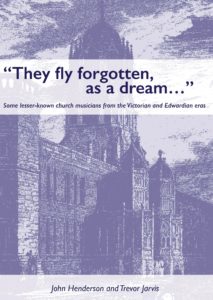
Reviews of printed music
CHORAL MUSIC
KEY
E Easy
M Medium
D Difficult
ANTHEMS FOR S/A MEN
EVENING HYMN [E]
Bob Chilcott
SAB and piano
Oxford BC229 £2.55
I wrote enthusiastically last year about the upper-voice version of this anthem. Now it is arranged with unison male voices singing the office hymn ‘Before the ending of the day’, while upper voices have a two-part setting of Fuller’s Evening Hymn (‘Now that the Sun hath veil’d his Light’). With voices well supported by a fl owing piano part, it is simple, useful and effective.
James L. Montgomery
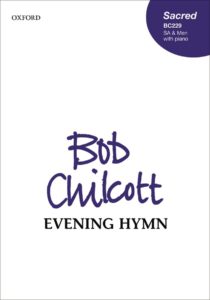
ANTHEMS FOR SOPRANOS,
ALTOS AND UNISON MALE
SINGERS [MOSTLY M/D]
10 anthems for the church year
ed. Leslie East
S/A/Men with and without
accompaniment
University of York Music Press
(RSCM) B0457 £7.95
RSCM ANTHEMS FOR
SOPRANOS, ALTOS AND
UNISON MEN [MOSTLY E/M]
30 anthems for the church year
ed. David Ogden
S/A/Men with and without
accompaniment
RSCM B0445 £11.50
Here are two exciting, and very different, collections for choirs
with comparatively few male voices. The University of York Music
Press volume comprises newly written works by distinguished senior composers such as Robert Saxton, Ed Hughes, Sadie Harrison and Anne Boyd, composers who have made their name in the concert hall rather than with music for the church. Under Leslie East’s guidance they have written works that are not too difficult in pitching, rhythmic complexity or vocal range, and with accompaniments that help the singers. The texts, including four joyful psalm settings, have many possibilities in worship.
David Ogden’s collection of 30 anthems, exceptionally good value at £11.50, is a mixture of new compositions and arrangements (including of John Rutter’s Gaelic Blessing). The 23 composers include such well-established figures such as Philip Moore, Richard Shephard, Geoff Weaver and Philip Wilby; from a younger generation come notable pieces by Owain Park and Ghislaine Reece-Trapp, and four from the versatile Thomas Hewitt Jones. There is a good seasonal and thematic index showing how thoroughly the church year is covered, and the easiness of most of the pieces makes them suitable for almost any choir able to sing in three parts. A few pieces have appeared in print before, but it is useful to have them within this comprehensive collection. Unlike the University of York anthology, one looks in vain for any information about the composers.
Stephen Patterson
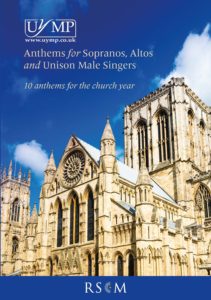
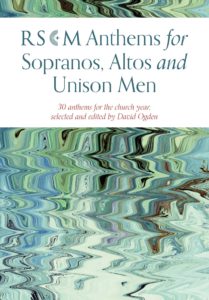
CHORAL WORKS
GLORIA IN D RV589
Antonio Vivaldi
ed. Günter Graulich
Carus 40.001/53 Vocal Score €8.95
MASS IN C MINOR KV427
Wolfgang Amadeus Mozart
ed. Ulrich Leisinger
Bärenreiter BA9188-90 Vocal Score
£14.00
Ready for when choral societies are able to reassemble, here are new
state-of-the-art scores of two favourite sacred pieces. The Vivaldi was Carus Verlag’s first publication (hence the 001 in its order number). This latest revision, which has been reset and forms part of the Urtext Stuttgarter Vivaldi-Ausgabe, comes with a new foreword by Uwe Wolf. Also available are full score, extra large vocal score, chorus score and orchestral material, plus the carusmusic choir app with score, recording and vocal line coaching for singers.
Mozart’s ‘Great’ C minor Mass was left incomplete by Mozart, and the manuscript of some of the movements that he did complete has not survived. So any edition of this Mass has to be partially reconstructed by the editor. For this collaboration between Bärenreiter and the Mozarteum Foundation in Salzburg, Ulrich Leisinger has reconstructed, completed and edited the work, and written a fascinating introduction where he examines the unexplained circumstances of its genesis, its incompletion, and of various details of its first performance. He writes that the work is notable for ‘its monumentality and musical beauty, but will always retain an aura of the unfinished and mysterious’. Bärenreiter have published full score, chorus score and orchestral material, and also a useful miniature score (TP 988).
Stephen Patterson
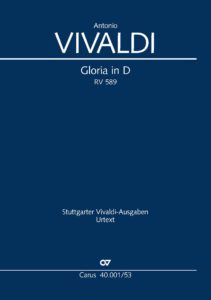
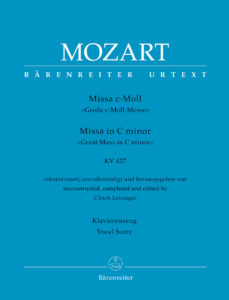
ORGAN MUSIC
KEY
E East
M Medium
D Difficult
CHRISTMAS ORGAN MUSIC
FOUR CHRISTMAS PRELUDES
[M]
Gordon Lawson
Fagus-music.com £10.00
If we are able to hold carol services this year, this delightful quartet of preludes by Gordon Lawson is a welcome addition to the repertoire. Each prelude fills no more than two sides of A4 paper, thus avoiding page turns, but it does mean the print is quite small and line spacing leaves a bit to be desired. Otherwise the collection is well presented and neatly bound. Registrations are left up to the player, but with dynamics clearly marked it is straightforward to come up with appropriate ones. Each prelude is based on a Christmas carol and these are quite easy to identify; Lawson deliberately does not give anything away and nor shall I! Each prelude is a characterful setting, each with its own challenges but nonetheless a joy to play.
Ian Munro
ORGAN TUTOR
THE NEW OXFORD ORGAN METHOD
Anne Marsden Thomas and Frederick Stocken
Oxford 978-0-19-351832-2 £29.95
This year sees the publication of the highly anticipated New Oxford Organ Method by Anne Marsden Thomas and Frederick Stocken, the first of its type in the UK since C.H. Trevor’s The Oxford Organ Method and David Sanger’s Play the Organ series.
The New Oxford Organ Method focuses on the organ’s rich repertoire, using carefully selected pieces as the inspiration for learning the instrument. Each chapter focuses on a single piece to demonstrate and instruct players in pedalling and fingerwork, registration, practice methods and historically informed interpretation. Detailed technical descriptions are supplemented with illustrative photographs, and acquired techniques are reinforced through short musical studies that provide practice material and are also suitable for wider application. A comprehensive approach, the method is designed for all organists, with or without a teacher, but in particular those seeking an integrated course of study that embraces the literature and practical music-making.
The volume begins with a foreword by David Titterington, head of organ at the Royal Academy of Music, and continues with a highly detailed introduction by the editors on how to use the method. In all, this is a superbly crafted piece of work that offers an undaunting, but thorough introduction to playing the organ. It cannot be recommended enough for anyone wishing to take up the organ, or those wishing to refresh their skills, whatever their level.
Richard Brasier
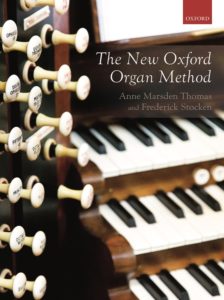
INDIVIDUAL VOLUNTARIES
THREE VARIANTS ON ERISKAY LOVE LILT [M/D]
Andrew Carter
Banks Music Publications 14106 £3.95
This is another beautiful Banks publication and another superb work by Andrew Carter. The picture of Eriskay on the cover will help the performer convey the idyllic scene in their interpretation. This beautiful Scottish tune is ideal meditative music for a service or a peaceful interlude during a recital. The music is well presented, with clear tempo markings and other performance directions. The organ registrations are helpful, although here are a couple of instances where it is not clear to which manual the instruction applies. An unnecessary divider between the systems at the start disappears from page three onwards.
Ian Munro
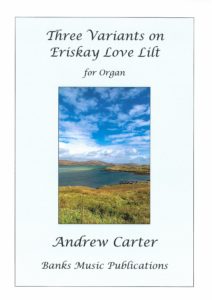
RÉJOUISSANCE (A TUBA TUNE) [E/M]
A TRUMPET MINUET (A HOMAGE TO ALFRED HOLLINS) [E/M]
Vernon Hoyle
Banks Music Publications 14094, 14101 £3.50 each
Réjouissance and A Trumpet Minuet both broadly follow the standard structures associated with such compositions. They offer the organist an opportunity to showcase a solo reed on their chosen instrument, and while there are some occasional tricky moments in Réjouissance, both pieces are highly approachable and attractive. As is usual for a Banks publication, the scores are well presented, with clear notation. These pieces are well worth looking at if you are after alternative works from the trumpet tunes that form part of the standard repertoire for organists.
Richard Brasier
FESTAL FANFARE [D]
Jennifer Bate
Banks Music Publications 14100 £4.50
In March 2020, the organ world mourned the death of Jennifer Bate, but her music lives on in many ways. As well as an acclaimed concert organist, she was a well-known composer. Her Festal Fanfare was written for the new organ of St Catherine’s School, Bramley, and first performed at the inaugural recital there in October 2015. Accompanied by a composer’s note and instructions concerning registration, this is a vibrant toccata-like work that will easily challenge the technique of more advanced players. The work itself is styled in the mould of the works of Anton Heiller and Franz Kropfreiter, and while probably best suited to a neo-classical instrument, it will sound well on instruments of all styles and sizes. The Festal Fanfare would slot easily into a concert programme, or function as a vibrant voluntary at the end of a service.
Richard Brasier
FLÖTENKONZERT [M/D]
Christian Heinrich Rinck
ed. Christoph Dohr
Verlag Dohr (Universal Edition) 23087 £10.95
2020 has seen not only the 250th anniversary of the birth of Beethoven, but also of the Thuringian organist and composer, Christian Heinrich Rinck (1770–1846). Rinck is an important composer chronologically, with firm roots in the Baroque tradition through his studies with Christian Kittel, who himself was a student of J.S. Bach. He also helped oversee the transition to the classical and ultimately romantic styles of composition, always adapting to the changing musical landscape and to the changes in tonal variety on the organ. This Flötenkonzert appears in volume 5 of Rinck’s Praktischen Orgelschule, and the present edition is a reprint of the earlier Litolff edition. It is not a transcription, but written in the style of a classical concerto, with solo passages alternating with much bolder passages which serve to imitate an orchestra. This charming work is suited to the concert hall but may also be broken up as organ voluntaries in a service.
Richard Brasier
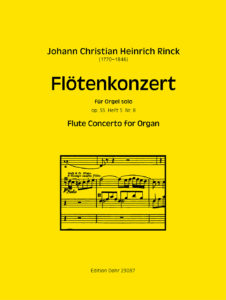
SONATA No.1 Op.149 [D]
Charles Villiers Stanford
ed. Daniel Cook
RSCM N1203 £9.50
While Charles Villiers Stanford (1852–1924) is rightly revered for his skill as a choral composer, his relatively large output of organ music rarely receives similar attention. He composed many shorter works for organ of varying difficulty, and larger works including five organ sonatas. While these pieces might not be the most superficially approachable, there are many moments that suggest Stanford should receive more acclaim for his organ writing than he generally receives. This edition of the Organ Sonata No.1 is well presented and offers extensive notes by both Jeremy Dibble and Daniel Cook on Stanford’s career, the sonata itself, and different ways of approaching it. The sonata is probably better placed in the hands of more advanced organists but would be a welcome addition to the collection of those who enjoy Stanford’s music and the English romantic idiom.
Richard Brasier
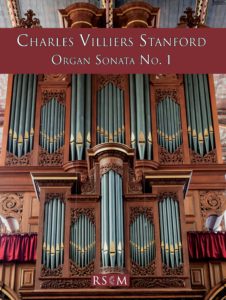
ANTHOLOGIES
THREE PIECES [M–M/D]
Ernest Halsey
ed. David Patrick
Fitzjohn Music Publications £9.00
Ernest Halsey (1876–1939) is not a name that will be familiar to many organists. He was organist at the Congregational Church in Anerley, South London, but his main interests were in business. His three pieces (Postlude alla Marcia in B flat, Toccata in C, Scherzo in F) are what you would expect of organ compositions of the Victorian and Edwardian periods, and while they are unlikely to ever become mainstream, they provide a welcome alternative to the works of more well-known composers. The preface is very short, but the edition overall is well presented.
Richard Brasier
ORGAN SOUND COLOURS, VOLUME [E–D]
ed. Ian Higginson
Parish Publications PPOSCS001 £20.00
The first volume of Organ Sound Colours contains a total of 12 new organ pieces by the composer, Ian Higginson. The album itself is dedicated to Trevor Tipple, a recently retired organ builder, church organist and choirmaster in the Midlands. It contains works of varying difficulty and in different styles (contemplative chorales, trumpet tune, scherzo, sortie, etc.). There is plenty to explore here, with works suitable for church services and the concert platform. The edition itself has been well laid out, with an attractive cover. The price may seem a little steep at £20, but this is a collection that is worth investigating further.
Richard Brasier
AN ORGANIST’S SCOTTISH COLLECTION [E/M]
arr. Antony Baldwin
Banks Music Publications 14104 £6.95
This charming collection of 29 famous Scottish tunes (and Highland Cathedral, which is German!) is a welcome addition to the repertoire. The music is perfect for funerals and memorial services, as well as recital fillers. Each tune is only a page long, and there is enough material to create your own suite or ‘set’ of tunes. The many favourites include Auld lang syne, Dream Angus, Flower of Scotland and Kelvingrove (which perhaps should be included in a recital at the Kelvingrove Gallery, Glasgow). The music is well presented and laid out; a lovely photograph of St Giles Cathedral in Edinburgh features on the front cover. The whole collection seems under-priced for what is in every way a quality publication.
Ian Munro
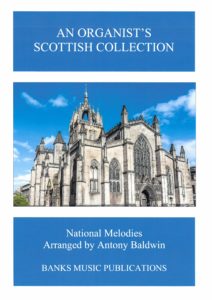
SHORT ORGAN PIECES SET 1: TRUMPET TUNE, MEDITATION, MARCH [M]
SHORT ORGAN PIECES SET 2: SCHERZO, PLAINT, POSTLUDE [M]
Tim Knight
Tim Knight Music TKM 847 & 848 £4.25 each set
These sets of three pieces for organ by Tim Knight explore the different timbres of the organ. The pieces themselves are musically satisfying, but their presentation is marred by poor layout and formatting inconsistencies, such as slur lines that cut through notes and triplet indications, mispositioned rests, and tempo indications in small, italicised text that at times float randomly between systems. These small but important gripes mar six pieces that are fun to play. They are intended to be performed either as two suites or as six stand-alone pieces.
Ian Munro
HYMNS FOR ORGAN
FIVE PRELUDES ON ENGLISH HYMN TUNES [D]
Francis Jackson
Banks Music Publications 13969 £7.50
A COLLECTION OF HYMN AND CHORALE PRELUDES BY ENGLISH AND IRISH COMPOSERS [mostly M/D]
edited by David Patrick
Fitzjohn Music Publications £12.00
Although published in 1987 in a facsimile of the composer’s manuscript, Francis Jackson’s Five Preludes deserve this new, reset edition, in which there are some small amendments to St Magnus, East Acklam and Sine Nomine. The other tunes are St Bartholomew and a Veni Sancte Spiritus marked ‘Homage to J.S.B.’ with a ‘Jesu Joy-like’ accompaniment to the tune. The most substantial piece is Fantasy on ‘Sine Nomine’, indeed a ‘fantasy’ rather than a prelude, and one that could be a thrilling final voluntary for All Saints.
David Patrick’s collection is an admirable survey of the hymn prelude tradition over an earlier period, from George Macfarren (1813–87) to Basil Harwood (1859–1949). 16 preludes, each on a different tune, come from 12 composers, some of whom are little known, such as Frederick William Hird’s three very short ‘Interludes’, or Frederick Kelly who died in action in World War I. Among better-known figures, Harvey Grace’s A Christmas Postlude (the definition of prelude is wide) is an over-the-top Christmas potpourri while Macfarren gives Windsor an introduction, theme and seven variations to provide a stand-alone concert work.
Duncan Watkins
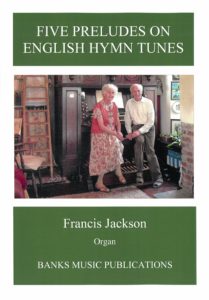
EIGHT INTERLUDES ON WELL-KNOWN HYMN TUNES [E]
Kyle McCallum
KINGSFOLD: A PRELUDE FOR ORGAN [M]
Norman Harper
Fagus-music.com £12.00 and £5.00
One can question whether Kyle McCallum has based all his pieces on ‘well-known’ tunes (including Dennis, Ombersley and Pulling Bracken), and indeed whether they are ‘Interludes’: one is subtitled ‘Interlude, one ‘Pastorale’, one ‘Sketch’ and five ‘Meditation’. But don’t let that put you off if you like chromatic harmonies with the various tunes. Typically there is a clean-cut start to each, whether the drone of pipes for Crimond or two-part counterpoint for Liebster Jesu, before the harmonies kick in that, depending on personal taste, may be richly expressive or thickly cloying. The other better-known tunes included are Wir pflügen, St Bees and St Columba.
More extended but also more straightforward in treatment is Norman Harper’s take on Kingsfold, opening with a Vaughan Williams Rhosymedre-like pattern (but in triple time) that underpins this attractive piece. The tune remains firmly in E minor, but after the third of the four lines of melody, and just when it is needed, the music takes a welcome stroll through some distant keys.
Duncan Watkins
THE FAGUS COLLECTION OF REFLECTIVE PIECES BASED ON PLAINSONG MELODIES [E}
Fagus-music.com £20.00
In these times of restriction on singing, there may be a special place for 25 short organ pieces that reflect on well-known plainsong melodies. As expected, they are mostly slow and quiet, although Evelyn Stell provides forte climaxes in most of her eight well-shaped contributions. The four pieces by Geoffrey Atkinson include proper melodies for Advent, Passiontide and Easter, the latter an atmospheric treatment of the Easter Sequence Victimae Paschali Laudes. Of particular note are Michael Dawney’s communion Adoro te devote and Passiontide Pange Lingua, and Alan Smith’s Adoro te devote (again) and Passiontide Vexilla Regis. The wide variety of uses and of treatments make this an appealing volume. All the pieces are easy; many are for manuals only or with optional pedals.
Julian Elloway
LOTHAR GRAAP AND WALTER GLEISSNER
Recent releases by Edition Dohr feature the works of Silesian composer Lothar Graap and the German Walter Gleissner. Both composers, still living, invoke the compositional styles of composers such as Hindemith, Heiller, Distler and Kropfreiter. The various pieces are of good quality and, if not always easy to listen to, will have their place in the right circumstances, whether in recital or a liturgical setting.
CONCERTINO [E–D]
Walter Gleissner
CONCERTINO [E–M]
Lothar Graap
Edition Dohr (Universal Edition) ED19019 and ED19028 £9.95 each
Walter Gleissner has used traditional sacred songs as the foundation for his Concertino, composed primarily for Truhenorgel (chamber organ). The three movements express the importance of commitment to transcendental life goals in our daily routine. The first movement (‘Initium’) presents Paul Gerhardt’s hymn ‘The golden sun full of joy and delight’ as a motif for the beginning of the day. The 18th-century hymn ‘All in honour of my God – in work, in rest’ is the basis for the central movement (‘Meditatio’) in the form of a partita. The final movement (‘Finalis’) uses the evening hymn from 1675 ‘The day’s work now is complete’ as its theme, and is laid out in rondo form.
The Concertino by Lothar Graap, again for Truhenorgel, consists of four movements, and was commissioned by Christoph Dohr. It opens with a joyful prelude. The second movement consists of variations on the hymn ‘Ich singe dir mit Herz und Mund’ (‘I sing to you with heart and mouth’). The third movement is based on an ostinato, and a festive prelude brings the work to a close.
CANTIO DUPLEX (DOUBLE HYMN) [D]
Walter Gleissner
Edition Dohr (Universal Edition) ED19053 £8.95
The Cantio Duplex is an expression of the composer’s gratitude for his life as a church musician, taking two hymns, ‘Now thank all and bring honour’ and ‘Now thank we all our God’, as models. While the melodic material of the first hymn is mainly used polyphonically, the chorale melody of the second moves through different voices as a cantus firmus. After growing intensity, the opening motif of Nun danket alle Gott forms the conclusion of the piece. The Cantio Duplex is inspired by an identically named work by Hermann Schroeder, whom the composer held in high esteem.
FANTASIE IV [M]
TWO PARTITAS: ‘SCHENK UNS WEISHEIT’ AND ‘GOTT, UNSRE WELT’ [E–M]
LITTLE PARTITA: ‘WIE EIN STROM VON OBEN’ [E]
Lothar Graap
Edition Dohr (Universal Edition) ED19022 £8.95, ED17659 £7.50, ED18952 £7.50
Fantasie IV was a commission from the American organist Carson Cooman, for a festival in Ohio based around the theme of ‘Fantasies for organ’. It consists of three sections, played with only a small pause between them: Largo–Allegro–Andante; Andante; Moderato.
‘Schenk uns Weisheit’ and ‘Gott, unsre Welt’ are the opening words of two songs by Irmgard Spiecker written for the World Days of Prayer in 1970 and 1974, in English ‘Give us wisdom, give us courage’ and ‘God, our world is created by your hands’. These two songs have inspired the composer to write several different musical settings. Here they are presented as theme and versets for organ, although it is also possible to play them on piano or harpsichord.
The short partita on ‘Wie ein Strom von oben’ or ‘Like a river, glorious’ was composed for an event where interpretations of the hymn text alternated with organ verses based on the tune, concluding with a congregational performance of the hymn. The theme and six variations are easily accessible and written in a way that makes them approachable for organists at every level.
Richard Brasier
